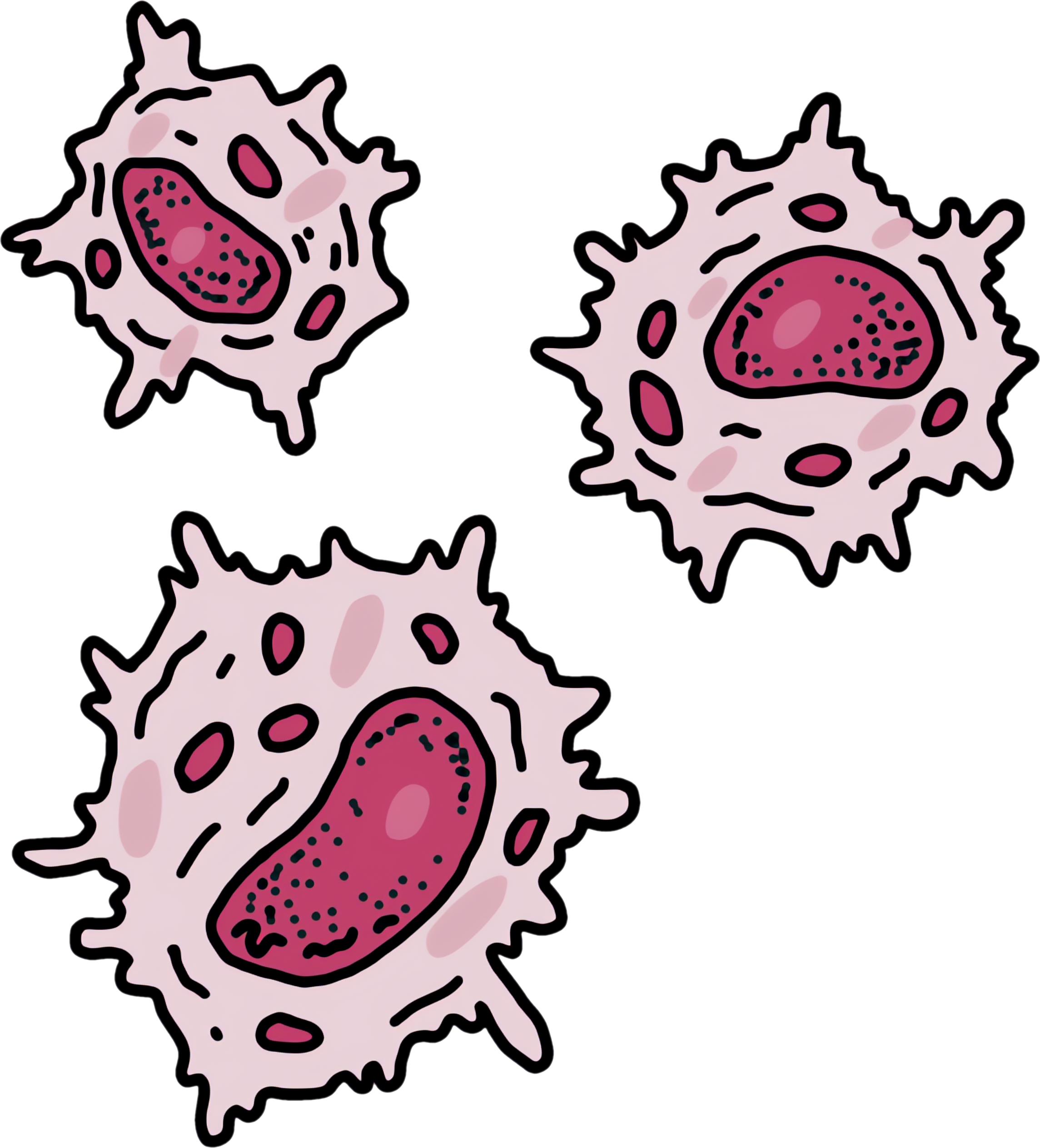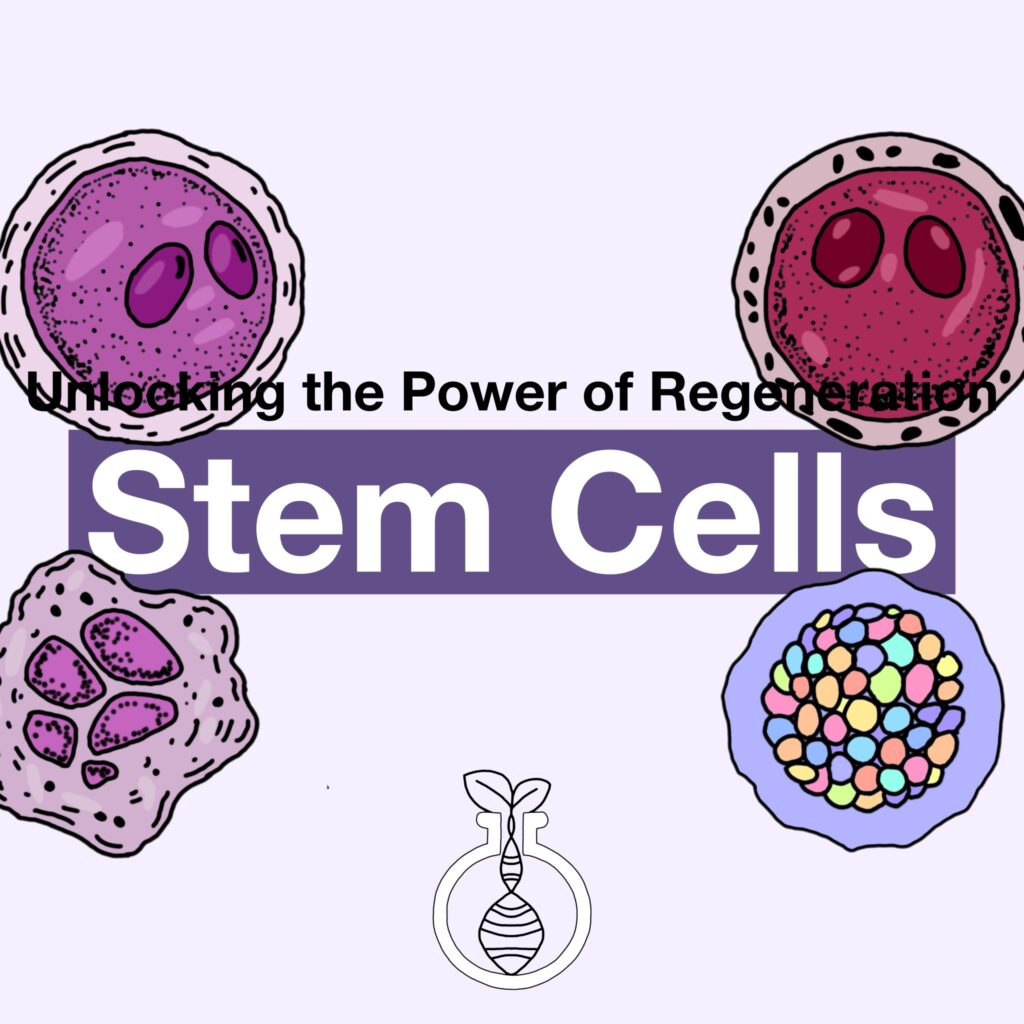Imagine if we could heal spinal cord injuries, repair damaged hearts, or even replace cells lost to diseases like diabetes or Alzheimer’s. Stem cells, often referred to as the body’s master cells, offer the tantalizing possibility of regenerating damaged tissues, giving us hope for treatments that could change the course of medicine as we know it. Stem cells have the remarkable ability to turn into different cell types, making them crucial in repairing and replacing cells that have been damaged or lost. But how does this process work? What is the science behind stem cells, and why is there so much excitement—as well as debate—around their use?

What Are Stem Cells?
At the heart of regenerative medicine are stem cells—cells that have the unique ability to divide and differentiate into a variety of specialized cell types. Unlike most cells in the body, which are “locked in” to a specific role (like skin cells or muscle cells), stem cells are undifferentiated. This means they can become almost any cell type, from brain cells to heart cells, depending on the signals they receive.
There are two primary types of stem cells:
Embryonic Stem Cells
These are derived from early-stage embryos and have the greatest potential because they are pluripotent, meaning they can become any type of cell in the body. Embryonic stem cells are seen as the most powerful tools for regeneration due to their unlimited potential for differentiation.
Adult Stem Cells
Found in certain tissues like bone marrow, fat, and blood, adult stem cells are more specialized. They tend to create cells related to their tissue of origin, so bone marrow stem cells primarily form blood cells. While not as versatile as embryonic stem cells, adult stem cells still play an essential role in the body’s natural repair system, replacing cells lost to injury or disease.
Another exciting development in the field of stem cell research is the discovery of Induced Pluripotent Stem Cells (iPSCs). Scientists have figured out how to take ordinary adult cells, like skin cells, and reprogram them into a pluripotent state, effectively turning them into stem cells. These iPSCs behave like embryonic stem cells, offering a way to bypass the ethical concerns surrounding the use of embryos while still providing similar regenerative potential.

The Promise of Regeneration: Treating Injuries and Diseases
The idea that we could use stem cells to regenerate damaged tissues and organs is no longer just a dream—it’s becoming a reality. Regenerative medicine, the science of using stem cells to replace or repair damaged cells, has already shown promise in several areas of healthcare, from treating traumatic injuries to combating chronic diseases.
Here are some of the most exciting ways stem cells are being used or studied:
Spinal Cord Injuries
Spinal cord injuries often result in permanent paralysis because the nerve cells in the spine cannot repair themselves after being damaged. But stem cells offer hope. Researchers are experimenting with using stem cells to replace these damaged nerve cells, restoring connections and function. Early clinical trials have shown promise, with some patients regaining sensation and motor function. This could be life-changing for millions of people worldwide who live with paralysis due to spinal cord injuries.
Heart Disease
After a heart attack, the heart’s ability to pump blood can be permanently compromised due to the loss of heart muscle cells. Stem cells, however, have shown potential to regenerate these heart cells. Scientists are working on ways to transplant stem cells into the damaged areas of the heart to stimulate the growth of new, healthy tissue. Clinical trials have demonstrated improvements in heart function, offering hope for people suffering from heart disease.
Diabetes
For people with type 1 diabetes, their immune system attacks the insulin-producing cells in the pancreas. Without these cells, their bodies can’t regulate blood sugar, requiring lifelong insulin therapy. Stem cell research is exploring the possibility of regenerating these insulin-producing cells. By using stem cells to replace these cells, there is hope that diabetes could be managed or even cured, freeing patients from the need for insulin injections.
Neurodegenerative Diseases
Conditions like Parkinson’s, Alzheimer’s, and Huntington’s disease are caused by the loss of specific types of brain cells. Stem cell therapy could replace these lost cells, potentially slowing or reversing the progression of these diseases. For example, in Parkinson’s disease, researchers are working on using stem cells to regenerate dopamine-producing neurons, which are lost as the disease progresses. Early trials have shown promise, with some patients experiencing improvement in symptoms.
Tissue Engineering and Organ Repair
Stem cells are also being used in tissue engineering, where scientists create new tissues or even organs in the lab. For patients who need organ transplants, this could eliminate the need for organ donors and reduce the risk of organ rejection, as the new tissue could be made from the patient’s own cells. For example, scientists are working on creating lab-grown kidneys, livers, and even lungs, all using stem cells as the foundation.

The Ethical Debate: The Controversy Surrounding Stem Cells
As exciting as stem cell research is, it’s not without controversy. The primary ethical debate centres around the use of embryonic stem cells, which are harvested from early-stage embryos. Critics argue that using embryos in this way destroys potential human life, and this has led to strict regulations and limitations on embryonic stem cell research in many countries.
On the other side of the debate, proponents of embryonic stem cell research point out that these embryos are often donated from fertility clinics and would otherwise be discarded. They argue that the potential benefits—curing diseases, repairing injuries, and saving lives—far outweigh the ethical concerns. For many, the chance to alleviate suffering justifies the use of embryos in research.
The discovery of induced pluripotent stem cells (iPSCs) has provided a potential compromise. Since iPSCs are created from adult cells and don’t require the destruction of embryos, they sidestep many of the ethical issues surrounding embryonic stem cells. However, iPSC technology is still relatively new, and researchers are still exploring how safe and effective they are compared to embryonic stem cells.
As the field of stem cell research continues to advance, the ethical debate is likely to evolve, with new technologies and discoveries shaping how we approach the use of stem cells in medicine.

The Future of Stem Cell Research
The future of stem cells in medicine is incredibly promising. Ongoing research continues to push the boundaries of what’s possible, and scientists are constantly discovering new ways to harness the power of these cells to treat injuries and diseases that were once considered untreatable.
In addition to regenerative therapies, stem cells are also being used in drug development and disease modeling. For example, researchers can create patient-specific stem cells to test how a drug will interact with their unique genetic makeup, leading to more personalized and effective treatments. Stem cells are also being used to model diseases in the lab, giving scientists a better understanding of how diseases develop and how to stop them in their tracks.
Another exciting avenue of research is gene editing. By combining stem cell therapy with gene-editing technologies like CRISPR, scientists could potentially correct genetic mutations before they cause disease. This would open up new possibilities for treating genetic disorders at their root cause.
Despite these advances, there are still challenges to overcome. Scientists are working to improve the safety and effectiveness of stem cell therapies, ensuring that transplanted cells don’t cause harmful side effects or lead to uncontrolled cell growth. But with every new discovery, we get closer to a future where stem cell therapies are a routine part of medicine.

Conclusion: Unlocking the Power of Regeneration
Stem cells hold the key to unlocking the body’s natural ability to heal itself. From regenerating spinal cord tissue to replacing insulin-producing cells in diabetics, the potential applications of stem cell therapy are vast and groundbreaking. The ethical debates surrounding their use may continue, but the promise of curing once-untreatable diseases and injuries makes stem cell research one of the most exciting and transformative fields in modern medicine.
As science progresses, stem cells may well revolutionize the way we approach healing, shifting us from managing diseases to actually reversing their effects. The future of regenerative medicine is bright, and stem cells are at the heart of this transformation, offering hope for a world where damaged tissues can be repaired, organs can be regenerated, and diseases can be cured.
The potential for stem cells to change the face of medicine is not just a distant possibility—it’s already happening. The only question is how far this incredible science will take us.


My name is Ali Emre Cabadak, a dedicated biology enthusiast currently pursuing my studies at Marmara University, where I am majoring in Bioengineering. As a passionate advocate for scientific discovery and innovation, I am the founder of Biologyto. My goal is to bring the wonders of biology closer to everyone and inspire a new generation of thinkers and innovators. Through Biologyto, I aim to write scientific articles that delve into the fascinating world of biology, sharing insights and discoveries that inspire curiosity and innovation.





